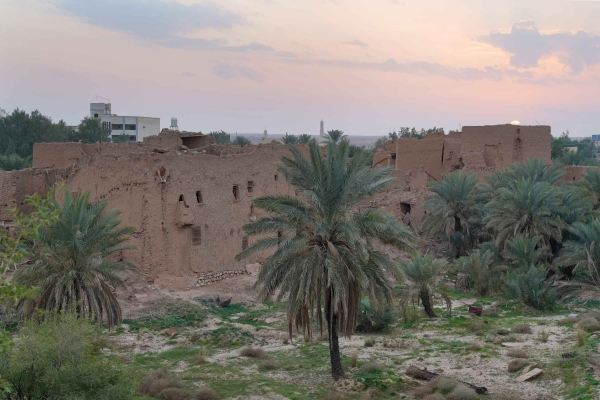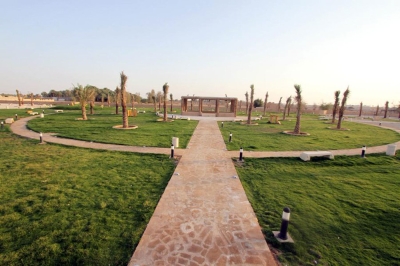
Ushaiqer Center is an administrative center affiliated with
Naming and importance of Ushaiqer Center
The name Ushaiqer is derived from the word 'Shaqra,' which means 'blonde'. This name refers to the reddish mountains that overlook the yellow mud-brick houses of the neighborhoods. In the sixteenth century, Ushaiqer experienced diverse prosperity due to several factors, including drought, conflicts, and general disturbances in nearby centers. Consequently, it became a center for religious and human sciences in Najd at that time.
Ushaiqer Center landmarks
Ushaiqer Center boasts numerous natural and heritage landmarks, including the Ushaiqer Heritage Village, the Ushaiqer Mountain Overlook and Park designated for hosting events, and the extensive palm farms stretching along the center. Additionally, the center is home to "al-Salem Museum," a notable tourist attraction. The museum, established by residents, houses a diverse collection of artifacts that tell stories of local heritage and culture. The exhibits include brightly colored embroidered clothing, luxurious jewelry, artistic ceramics, ancient weapons, and traditional cooking utensils.
Among the natural landmarks near Ushaiqer Center is al-Munhana Dam, located about 4.5 km away. The dam has a storage capacity of approximately one million m³ and reaches a height of about twelve m.
The center also includes a sports club named "Ushaiqer Club,", one of the sports clubs in the Kingdom, classified as a fourth-division club for the 2023-2024 season. It was established in 1982, and there are six sports practiced there.
Ushaiqer Heritage Village
Ushaiqer Center includes a heritage village that was first inhabited 1,500 years ago. It expanded to become a stopover point for pilgrims traveling to Makkah al-Mukarramah because of its springs and gardens. The village is surrounded by thick walls along its winding alleys and narrow pathways, which weave through hundreds of ancient mud houses.
The buildings encircle a main, rectangular-shaped square. To its west lies al-Jami' Mosque, while the east side houses a collection of shops and public services such as grain stores, a scale, funeral biers, a place for sheltering stray animals, a guest house, and traditional schools. The residential neighborhoods are connected to the square through arterial roads.
The village houses were built from adobe bricks, with foundations made of limestone and other naturally occurring stones in the area. These foundations consisted of five courses. The roofs were constructed using tamarisk and palm trunks, covered with palm frond mats and then a layer of clay. The roofs of the residential buildings were supported by wooden poles.
The town is distinguished by its numerous landmarks and heritage sites, including the market or council, the walls, the gates, Faylaqiya Mosque, the Northern Mosque, al-Jami' Mosque, al-Wuhaibi House, and the ancient wells.
Related quizzes
Related articles

